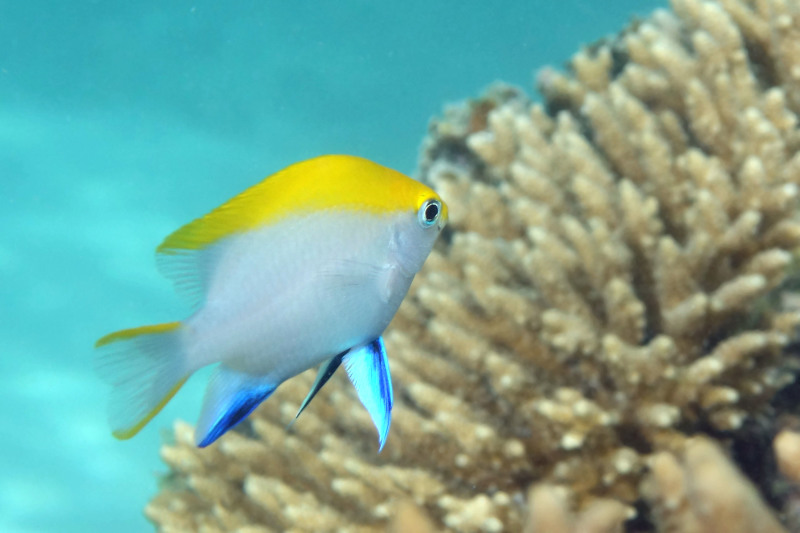Colours
Distinguishing features
A medium sized black damselfish usually seen singly or in a small group. This is the only species with jet black colouration (most other dark damselfish are actually dark brown). The pectoral fins are also black (not transperant), which is another easily identifiable characteristic. Like other members of the genus Neoglyphidodon, the juvenile is distinctly different in appearance to the adult, with bright blue pelvic and anal fins, a white body, and yellow colouration dorsally and on the tail margins.
Size
- Up to 15 cm (Standard length)
Depth range
- Depth range data is not yet available.
Synonyms
Distribution
Distribution and habitat preferences
Shallow lagoonal and backreef areas with abundant hard and soft coral.
Found in most sheltered locations around the Island.
Behaviour
It is from a genus of herbivorous fishes, but has evolved some novel dietary preferences and related changes in microhabitat selection with increasing age. The newly settled juveniles recruit into heads of braching Acropora coral, and feed on plankton. As they grow, they begin to feed on algae and also soft coral if available, which is a unique food source as it contains many toxic chemical compounds which the fish seem to be able to digest. When they reach large sizes, they change to the all black adult colouration, and if possible, will take up residence near a giant clam (Tridacna gigas) and consume the clam faeces, as well as algae and soft coral. Recent research at Lizard Island has shown this species to have a flexible ecology depending on location. Specimens in high density populations in habitats with abundant giant clams, hard corals and soft corals, tend to reside near a clam in a home range little more than 3-4m wide, feeding mainly on clam feces and soft coral. In contrast, specimens in low density populations near habitats with abundant giant clams and hard corals have home ranges of 50-80m, and fishes will visit many clams to check for fecal pellets.
Web resources
References
- Booth, D.J. (2002). Distribution changes after settlement in six species of damselfish (Pomacentridae) in One Tree Island lagoon, Great Barrier Reef, Marine Ecology Progress Series, 226: 157-164. LIRS catalog number 90094.
- Ceccarelli, D.M., G.P. Jones and L.J. McCook (2001). Territorial damselfishes as determinants of the structure of benthic communities on coral reefs, Oceanography and Marine Biology: an Annual Review, 39: 355-389. LIRS catalog number 90095.
- Ceccarelli, D.M., G.P. Jones and L.J. McCook (2005). Effects of territorial damselfish on an algal-dominated coastal coral reef, Coral Reefs, 24: 606-620. LIRS catalog number 90096.
- View all references



